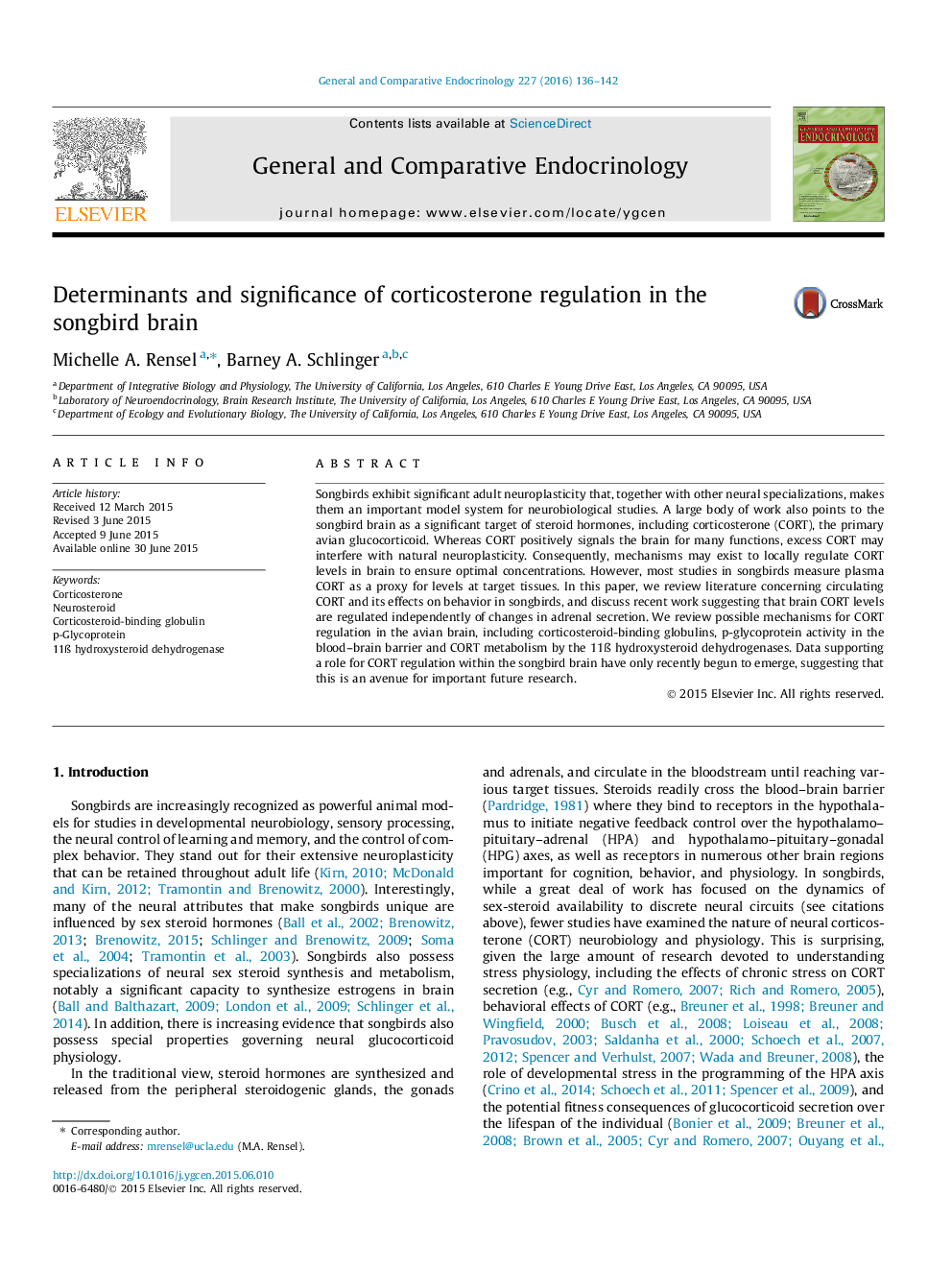| Article ID | Journal | Published Year | Pages | File Type |
|---|---|---|---|---|
| 2799868 | General and Comparative Endocrinology | 2016 | 7 Pages |
•Plasma corticosterone measures are often used as a proxy for levels in brain.•The songbird brain is sensitive to corticosterone.•Emerging evidence suggests that brain corticosterone levels are locally regulated.
Songbirds exhibit significant adult neuroplasticity that, together with other neural specializations, makes them an important model system for neurobiological studies. A large body of work also points to the songbird brain as a significant target of steroid hormones, including corticosterone (CORT), the primary avian glucocorticoid. Whereas CORT positively signals the brain for many functions, excess CORT may interfere with natural neuroplasticity. Consequently, mechanisms may exist to locally regulate CORT levels in brain to ensure optimal concentrations. However, most studies in songbirds measure plasma CORT as a proxy for levels at target tissues. In this paper, we review literature concerning circulating CORT and its effects on behavior in songbirds, and discuss recent work suggesting that brain CORT levels are regulated independently of changes in adrenal secretion. We review possible mechanisms for CORT regulation in the avian brain, including corticosteroid-binding globulins, p-glycoprotein activity in the blood–brain barrier and CORT metabolism by the 11ß hydroxysteroid dehydrogenases. Data supporting a role for CORT regulation within the songbird brain have only recently begun to emerge, suggesting that this is an avenue for important future research.
